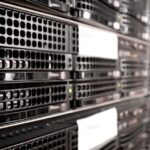Outline
- The Invisible Revolution: How Smart Ecosystems Are Quietly Taking Over
- From Smart Devices to Intelligent Relationships
- The Architecture of Connection: What Makes a True Ecosystem?
- Security, Sovereignty, and Trust in a Connected World
- The Human Element: Designing for Meaning, Not Just Convenience
- Living Intentionally in a Smart World
- FAQs
The Invisible Revolution: How Smart Ecosystems Are Quietly Taking Over
Not all revolutions announce themselves with noise. Some arrive quietly, embedding themselves in everyday life until they become indistinguishable from the air we breathe. This is the nature of the smart ecosystem revolution — an era defined not by a single device, but by connection.
It’s easy to overlook. A thermostat that learns your habits. A speaker that responds to your voice. A doorbell that recognizes faces. Harmless conveniences, perhaps. But step back, and a different picture emerges — a vast, intelligent web where devices speak, learn, and adapt together.
We are no longer buying gadgets. We are building environments — environments that watch, listen, and evolve. The question isn’t whether we’re part of a smart ecosystem. The question is: who is designing it — and who does it serve?
From Smart Devices to Intelligent Relationships
The early days of smart tech were focused on novelty. A lightbulb that changes color. A fridge that tells you what’s inside. These were isolated wins — clever, but shallow.
Today, we are entering a more profound phase. Smart ecosystems are becoming less about individual capabilities, and more about orchestration. Devices no longer just react; they collaborate. Your smartwatch notices you’re stressed and lowers the lights at home. Your EV syncs with your energy provider to charge during off-peak hours. Your work calendar talks to your coffee machine.
This is not about machines getting smarter in isolation. It’s about devices forming relationships — with you, with each other, and with the broader digital environment. We are witnessing the birth of ambient intelligence — where context, not commands, drives action.
The Architecture of Connection: What Makes a True Ecosystem?
Not all networks are ecosystems. True ecosystems are defined by integration, adaptation, and feedback. They evolve, not just respond. And they learn over time — not just from one device, but from the patterns across all.
The most powerful ecosystems are:
- Platform-agnostic – able to bridge brands, apps, and protocols
- Context-aware – understanding not just data, but meaning
- User-centered – adapting to you, not the other way around
Think of it like a digital nervous system. The more connected the parts, the more aware the whole becomes. A smart ecosystem isn’t about more devices — it’s about more intelligence through connection.
But connection alone isn’t enough. It must be intentional.
Security, Sovereignty, and Trust in a Connected World
With great connection comes great vulnerability. Every device in a smart ecosystem is a potential gateway — for hackers, surveillance, or simple misuse. When your home becomes a sensor, privacy becomes porous.
More than ever, we need systems designed with data sovereignty in mind. Who owns the data your smart doorbell collects? Who can access the health metrics from your wearable? And what does consent look like when devices act before you even ask?
The answer isn’t fear. The answer is transparency, choice, and control. Smart ecosystems must not only be intelligent — they must be trustworthy.
The Human Element: Designing for Meaning, Not Just Convenience
It’s tempting to see smart ecosystems as machines for convenience. Lights that turn on when you enter. Doors that unlock when you approach. Tasks done before you think of them.
But convenience without reflection becomes dependence. A true smart ecosystem should not just make life easier — it should make life more intentional.
Imagine a home that supports your goals, not just your habits. A workspace that enhances creativity, not just productivity. A city infrastructure that empowers inclusion, not just efficiency.
The future isn’t about living inside a machine. It’s about creating systems that are invisible where they should be, and empowering where they must be. Technology should fade into the background — and amplify what it means to be human.
Living Intentionally in a Smart World
The rise of interconnected devices is not just a trend — it is the shaping of an entirely new environment. One where every wall listens, every object remembers, and every action creates ripples across a digital web.
But the story we write is still ours to shape.
Will our ecosystems reflect shallow convenience or deep values? Will they be designed for surveillance or sovereignty? For frictionless consumption or thoughtful living?
The smart world is here. The question is no longer whether we adapt to it. The question is how we choose to participate in building it — not just as consumers, but as co-authors of its values, its behaviors, and its future.
FAQs
What is a smart ecosystem, and how is it different from just owning smart devices?
A smart ecosystem is a network of connected devices that communicate and collaborate to adapt to your behavior and environment. Unlike isolated gadgets, ecosystems create context-aware intelligence across your home, workplace, or city.
Are smart ecosystems a privacy risk?
They can be, especially if data is collected and shared without transparency. The key is choosing platforms that offer user control, data encryption, and clear consent policies.
How can I start building a smart ecosystem in my life?
Begin with your needs — not the tech. Identify routines or goals you’d like to optimize (comfort, focus, energy efficiency), and build slowly with devices that integrate well. Prioritize open platforms and privacy-focused options.








